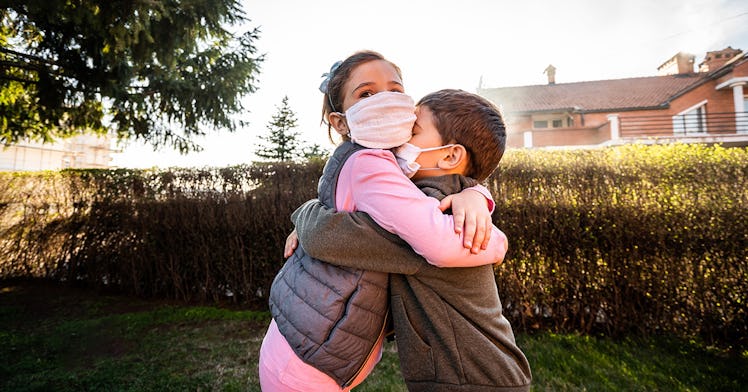How to Hug Safely During a Pandemic
A new piece in the NYT asked experts to describe COVID-proof hugs. Here's what we learned.

One of the more emotionally difficult things about COVID-19 quarantines is not hugging loved ones. Just ask the Canadian woman who made a “hug glove” to safely embrace her mom or the Chicago woman who built a similar contraption in her front yard.
“Affectionate touch is how our biological systems communicate to one another that we are safe, that we are loved, and that we are not alone,” a Stanford psychology professor told the New York Times. Without it, in other words, we can feel unsafe, unloved, and very alone.
But there is some good news. Virginia Tech aerosol scientist Linsey Marr told the Times that the risk of exposure during a brief hug can be surprisingly low, as it’s actually quite unlikely that a critical mass of copies of the virus — enough to make you sick — actually make it from the person you’re hugging to you.
The physically safest course of action, of course, is to eschew hugging altogether. But if the negative effects of “touch starvation” are getting to you and you’re ready to hug and be hugged as safely as possible, there are some expert-recommended best practices you can follow.
Wear a mask. The CDC recommends that everyone wear a mask while in public because keeping your face covered can prevent the virus from spreading. That’s true for huggers as well.
Hug outdoors. The evidence suggests that the coronavirus spreads more easily in enclosed spaces, so hugging outside is advisable.
Don’t talk or cough while hugging. The disease is transmitted via respiratory droplets that are expelled when you cough or hug, so make sure not to do either in close quarters.
Keep it brief. The longer the hug, the more time there is to transmit the virus.
Don’t cry, and wipe your nose. More fluids mean more risk, so fight back tears even if, as seems likely, there are some particularly emotional hugs.
Angle your face away from the person you’re hugging, avoiding cheek-to-cheek or face-to-face positions. Mouths and noses are where the coronavirus can be expelled and taken in. To minimize the risk of both, angle yours away from the person you’re hugging. Knee-level hugs from kids and kisses on the back of the head are low risk because they naturally keep huggers out of this danger zone.